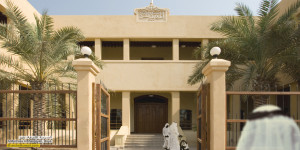




These days we hear of some “top” terror groups and their experts only after they are bombed, possibly killed, in the field.
A few weeks ago the media reported, based on official leaks, that a leader of the Khorasan Group (they are terrorists, not a contracting or industrial company) was killed in a precision bombing in Syria. I tweeted that if he were killed, it will become acknowledged quickly. We Muslims usually don’t deny death: there are certain rites and services that will be observed publicly. As it turned out, there was no acknowledgement of his death back home, which means that he was most likely not killed at that time. So we were told that maybe another leader was hit.
Now there are reports that another leading Khorasan member, converted Frenchman David Drugeon, has been bombed to death in Idlib, Syria. This one is more difficult to ascertain: his family are French, presumably Catholic.
Was he a ‘key bombmaker’ as the officials now claim? Was it leaked so soon in the spirit of the current American popular need for “instant gratification” and the need for a “mission accomplished“? Time will tell, not anonymous ‘officials’.
Cheers
Mohammed Haider Ghuloum
m.h.ghuloum@gmail.com





A bit of high school history here:
Why is no leader of this Wahhabi “Khorasan” group called Abu Muslim Al Khorasani? Given their penchant for noms de guerre starting with Abu and their use of Khorasan (a province in northeastern Persia/Iran)?
Abu Muslim Al Khorasani (also reportedly a nom de guerre) was the original man behind the original ‘black flag’. A Persian, he led the forces of the Abbasid, the original black flag revolution that overthrew the Umayyad dynasty which ruled from Damascus, in the eighth century (A.D.). The last Umayyad Caliph was named Marwan, he was nicknamed by some Al Homar (the Jackass) for obvious reasons.
After the Abbasids took power and started their dynasty, they started to eliminate their former allies and potential future rivals. They started by beheading the man who made their revolution possible, Abu Muslim Al Khorasani.
The Abbasids ruled for five centuries, often through Persian and Turkish surrogates and top ministers. The Abbasids were more cosmopolitan than their predecessors: they intermarried extensively with other ‘subjected’ peoples. They also shared administrative duties, unlike the extremely tribal Umayyads who kept power and influence within their own tribal kin.
The Abbasid rule was ended by the Mongols who sacked Baghdad and trampled the last Caliph, al-Must’asim, to death under their horses hoofs (reportedly after rolling him inside a nice Persian carpet).
Cheers
Mohammed Haider Ghuloum
m.h.ghuloum@gmail.com





Suddenly Khorasan is “the word” to throw around in American media. Yesterday I posted briefly on Khorasan here.
What is irking is that most media types mispronounce it by pronouncing it as “Corazón“. It becomes more so as it is repeated over time. So please, por favor, s’il vous plait, bitte, pozhalste, arjook, khahesh mikonam, do not pronounce it as “heart“. Not this Wahhabi use of it. Not this ugly context and incarnation of this beautiful historical word Khorasan which has deep roots and great significance in Islamic, Persian, Arab, and Central Asian history. Verstanden?
Cheers
Mohammed Haider Ghuloum
m.h.ghuloum@gmail.com





“‘Imminent Attack’ in U.S. Prompted Airstrikes on Khorasan…..” Bloomberg
This is the type of headline I woke up to early this morning. It can be shocking to read that U.S. warplanes have bombed an Iranian place with historical significance. But this is a new Khorasan, a Wahhabi Khorasan with an Iranian name that had deep impact on Islamic and Arab history. A concept.
Suddenly this new Middle East term is making headlines in the USA: part of the continuing dubious education of America on things Middle Eastern and Islamic. Courtesy of an Al Qaeda affiliate.
Khorasan is a large scenic province in northeastern Iran: it includes Nishapur, the birthplace of Omar Khayyam. The province has significance in Islamic history and in the past it encompassed parts of Afghanistan and other nearby countries. It was from eighth century (A.D.) Khorasan that the flames of the Abbasid revolution spread from Persia across to Iraq and eventually to overthrow the brief Umayyad dynasty of Damascus. The rebellion was strongest among the ‘disenfranchised’ Persian subjects and various Shi’a Arabs, especially in the homeland of Shi’ism in Iraq. The Abbasids carried a black flag throughout their campaign. The Abbasids also moved the Islamic capital from Damascus to Baghdad from which they ruled until the Mongol invasion in the 13th century.
It can be amusing to see the Wahhabi terrorists of Al Qaeda call this cell by the name of an Iranian place full of Shi’as and mullahs.
Cheers
Mohammed Haider Ghuloum
m.h.ghuloum@gmail.com
Multidisciplinary: Middle East, North Africa, Gulf, GCC, World, Cosmos…..







